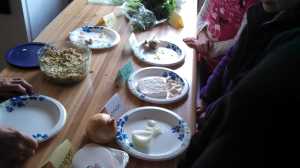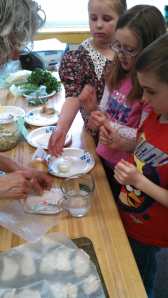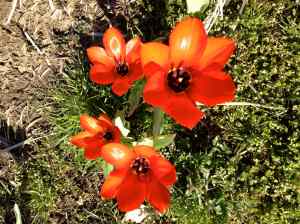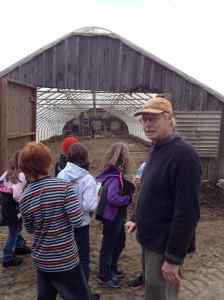


The third graders were working hard to finish their research reports on Nepal, beloved country of their teacher, Ian Levy. He spent a year living there before coming to Westminster. I learned a lot just peering over their shoulders as the students were working. There was an incredible slideshow of his adventures running on the smart board screen as the students worked.
I called few at a time to the classroom kitchen to learn with me about how to make a favorite food served in Nepal: momos! These are steamed dumplings filled with vegetables and yak meat. Since we didn’t have a source for fresh yak, we substituted tofu. Steamed dumplings and accompanying dipping sauces are ubiquitous in Asian countries. I had learned from a Chinese visitor to my classroom years ago, how to press paper thin rounds of dough into moon shaped dumplings. She might have been skeptical about the skills of eight year olds. I was not, and the students rose to the occasion. You can find dumpling wrappers in most supermarkets. If you’re lucky enough to have an Asian market nearby, you’re sure to find a large variety of wrappers.
Students observed, sketched and taste tested the fresh ingredients that had been finely diced and combined to make the filling. They then graded ingredients by flavor. Reactions were mixed, but most students were game for learning about tastes foreign to their palates. I am a firm believer that food preparation is one of the best ways to gain an early appreciation for diversity.


Each dumpling wrapper had to have its perimeter dabbed with water to allow the dumpling to hold together. Then, the outer edge of the filled half-moons were carefully crimped. Dumplings were placed on an oiled cookie sheet and covered with plastic wrap until we were ready to steam them.


We steamed the dumplings in a stainless steel steamer over a large frying pan filled with boiling water. We put a lid on the steamer. There are a variety of steamers available at Asian markets. Bamboo steamers are my favorites. You can oil a vegetable steamer and use that to steam your dumplings if that is all you have available.

The dumplingwere ready to eat after about 15 minutes of steaming. They tasted especially yummy when they were dipped in a sauce that was a combination of soy sauce, apple cider vinegar to taste and just a bit of sesame oil (vegetable oil will do). A few slivers of scallion and fresh ginger were added to the dipping sauce.
Momo Recipe: Tibetan Momo



























